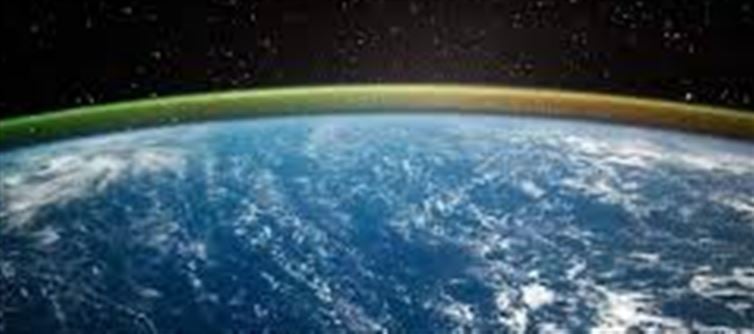
The ozone hole is a large depletion of the ozone layer—a protective shield of gas found in the Earth's stratosphere, which absorbs the majority of the sun's harmful ultraviolet (UV) radiation. This thinning or "hole" is most prominent over Antarctica, but it has implications for the entire planet.
What is the Ozone Layer?
· The ozone layer is a region of the stratosphere, about 15 to 35 kilometers above the Earth’s surface. It contains a high concentration of ozone (O₃) molecules that play a crucial role in protecting life on Earth.
· This layer absorbs the majority of the sun's ultraviolet radiation, particularly the more harmful UV-B and UV-C rays, which can cause skin cancer, cataracts, and harm to marine life.
What is the Ozone Hole?
· The ozone hole refers to a depletion or thinning of the ozone layer, primarily in the Antarctic region, that occurs every year during the spring months (September to November). The phenomenon was first discovered in the 1980s by scientists and has become a global environmental concern.
· The ozone hole grows larger in size as chlorofluorocarbons (CFCs) and other ozone-depleting substances continue to break down ozone molecules. CFCs were once widely used in aerosol sprays, refrigerants, and solvents, but have been phased out due to international agreements like the Montreal Protocol.
Recent Growth of the Ozone Hole
· The ozone hole over Antarctica has grown to an area of 20 million square kilometers. This is larger than average but still falls within the expected seasonal range. Despite this, experts warn that the hole is still largely influenced by human activity, specifically the release of chemicals that damage the ozone layer.
· The size and duration of the hole vary from year to year, depending on factors like weather patterns, sunlight exposure, and chemical reactions in the atmosphere.
Why the Ozone Hole is Critical for Earth’s Fate
1. Increased UV Radiation:
o The ozone layer acts as a natural sunscreen, blocking out harmful UV rays. If the ozone hole continues to expand or if recovery slows, it can allow more UV-B radiation to reach the Earth’s surface. This can have devastating effects on human health, including increased rates of skin cancer and eye cataracts.
2. Impact on Ecosystems:
o Marine life in particular is highly vulnerable to increased UV radiation. Phytoplankton, which form the foundation of the oceanic food chain, can be damaged by excessive UV exposure. This would disrupt entire marine ecosystems and affect the global food chain.
o Terrestrial plants, especially crops, are also vulnerable to UV-B damage, which can reduce agricultural yields and impact food security.
3. Climate Change Complications:
o The ozone layer and climate change are interconnected. While the ozone layer absorbs harmful UV rays, it also plays a role in regulating the Earth's climate. Any damage to the ozone layer could disrupt climate patterns and contribute to global warming by affecting the temperature balance of the Earth.
4. Global health Implications:
o In addition to the physical health threats, the increasing UV radiation would place a strain on healthcare systems, as the number of skin cancers, eye diseases, and immune system deficiencies would likely increase.
What Can Be Done?
· Montreal Protocol Success:
o The Montreal Protocol of 1987 was a major international treaty that aimed to phase out the use of ozone-depleting chemicals like CFCs. This agreement is credited with the recovery of the ozone layer, as the levels of ozone-depleting substances have decreased significantly since its enactment.
· Continued Vigilance and Research:
o Scientists continue to monitor the ozone hole and its recovery. While the hole is expected to eventually heal, this will likely take several decades due to the persistence of ozone-depleting chemicals already present in the atmosphere.
· Alternative Technologies:
o Continued development and adoption of ozone-friendly alternatives in industries like refrigeration and air conditioning will be essential in ensuring the long-term recovery of the ozone layer.
Conclusion:
The ozone hole over antarctica may seem distant, but its impact could be felt globally, affecting everything from human health to marine ecosystems. While the situation has shown improvement due to international efforts, the road to full recovery will require ongoing commitment to environmental protection, scientific research, and sustainable practices. The fate of the ozone layer is inextricably linked to the health of our planet—and its recovery will be crucial for future generations.
Disclaimer:
The views and opinions expressed in this article are those of the author and do not necessarily reflect the official policy or position of any agency, organization, employer, or company. All information provided is for general informational purposes only. While every effort has been made to ensure accuracy, we make no representations or warranties of any kind, express or implied, about the completeness, reliability, or suitability of the information contained herein. Readers are advised to verify facts and seek professional advice where necessary. Any reliance placed on such information is strictly at the reader’s own risk.
.jpg)




 click and follow Indiaherald WhatsApp channel
click and follow Indiaherald WhatsApp channel